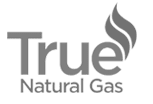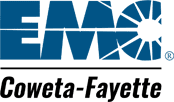Jacob Manus 0:11
Hello, and welcome to In the Loop, a podcast by Coweta-Fayette EMC. I’m your host, Jacob Manus, and I’m accompanied by my co host, Rachel Camp. First, thank you for tuning in to our brand new podcast, where we plan to deliver exciting up to date information on your cooperative and how it works.
Rachel Camp 0:28
Yes, so whether you’re currently on the go or are just enjoying some free time at home, here, we really want to take the opportunity to engage with you, our members, and provide information about your member owned cooperative. That’s why we invite you here to follow along every month for a new segment, and if you leave here with any questions, please be sure to let us know. We really hope you enjoy our podcast.
Jacob Manus 0:55
So let’s dive in. Today we’re going to be explaining the ins and outs of our electric membership cooperative and how we’re different from our for profit competitors. Rachel, if you could, could you please explain what exactly is an electric membership cooperative?
Rachel Camp 1:07
Sure, Jacob. So, EMCs are member owned not for profit utilities that serve approximately 4.4 million of Georgia’s 10 million residents and 73% of the state’s land area. Now because electric cooperatives are member owned and operated, democratic processes allow them a vote in annual cooperative board elections of which elected directors are nominated from among the members. This means that our EMC is owned by our members. Our rates are set by our members through a board of directors elected from and by the membership. And since we are a nonprofit cooperative, any margin above operating cost is refunded back to our members.
Jacob Manus 1:54
That’s exactly right. Cooperatives are people driven, or member driven, and as a member, you actually own it and can make a difference in terms of the direction of the business and the services that are provided. Rachel, I think it’s also important to explain to our members how electric cooperatives were formed. President Roosevelt created the REA in 1935 with the executive order number 7037 under powers granted by the emergency relief appropriation act. This marked the first steps in a public private partnership that has bridged the vast expanse of rural America to bring electric power to businesses and communities. Following the close of World War Two, the number of rural electric systems in operation doubled. Like many other cooperatives, Coweta-Fayette EMC was one of those to join the fold.
Rachel Camp 2:39
And join the fold, they did! So Coweta-Fayette EMC can actually trace its history back to 1945, when a group of citizens from Coweta, Fayette and Fulton counties met to discuss the creation of a new rural Electric Cooperative, and Jacob, after that, distribution lines were purchased from two other EMCs in 1947, and the cooperative was born. Since then, tremendous growth has occurred, and today, EMC serves one of America’s fastest growing communities. In fact, Coweta-Fayette EMC currently serves over 72,000 members from across eight counties in Georgia.
Jacob Manus 3:28
Rachel, thank you again for providing us with some details regarding the history of our cooperative. I think at this point, it’s important to explain to our members just how different we are from our for profit competitors, right after this break.
Rachel Camp 3:56
Welcome back. Now that we’ve gone through the ins and outs of an EMC, let us explain what makes us different from our for profit competitors. In order to do that, we’re going to break down the three main types of electricity providers. First, we have our investor owned utilities or IOUs. They serve primarily densely populated areas. Then we have municipal owned utilities, which operate in cities and towns, and they serve densely populated cities ranging from larger cities to smaller cities. And then we have electric cooperatives like ours, who generally serve less populated parts of the country. So now that I have listed the different types of utilities, let’s dive deeper into what makes us different. Jacob, could you please explain what truly separates us from our for profit competitors?
Jacob Manus 4:54
Absolutely. The difference originates from the business model. In the utility industry, the more customers you have allows you to spread the cost among more people to keep rates lower. At least that is the theory. Municipal owned utilities have the greatest density, about 48 customers per mile of line. IOUs follow with 34 customers per mile. And electric co-ops average a little over seven members, not customers, but members per mile of line. If you were to give this data to any business school in the country and ask, based on this information, what the rates would be for each of the utilities, the answer would likely be that electric co-ops would have an electric rate much higher than municipal owned utilities and IOUs, but that’s not the case. Again, it has to do with the business model. An IOU is owned by investors that may or may not be users of the electric utility they own. An IOU’s utility stock is traded on Wall Street and its investors want a return on their investment. Many municipal systems charge rates that generate a profit for their cities to help pay for their other services, but a co-op Board of Directors doesn’t have to set rates that will pay outside stockholders. Cooperatives aim to generate enough revenue to cover costs, the largest being the purchase of wholesale power and return any excess margin back to you, their members. Again, to summarize all that I just said, your electric cooperative is locally owned and locally focused. The cooperative mission is to provide its members safe, reliable and affordable power, not to make just a profit.
Rachel Camp 6:25
Yes, exactly. Understanding what makes us different is important in understanding why we are so committed to serving and educating our community and our members. So to conclude, just remember, electric membership cooperatives are member driven, nonprofit utility companies, and all members of cooperatives can take part in shaping policies and influencing the business. And with that, we conclude our first segment of In the Loop.
Jacob Manus 6:57
Thank you again for listening. Be sure to tune in to the next episode, where we will be discussing low cost high impact energy saving tips to help you conserve energy and cut costs on your electric bill.
Rachel Camp 7:09
To learn more information about your cooperative and the programs we offer, be sure to visit our website at www.utility.org, and if you have any questions or feedback about today’s segment, drop us a comment on Facebook at Facebook.com/CowetaFayetteEMC or tweet us at CoFayEMC. And lastly, don’t forget to subscribe to In the Loop wherever you listen to your podcasts so you’ll never miss an episode.
Jacob Manus 7:39
We’ll see you next time on In the Loop!


